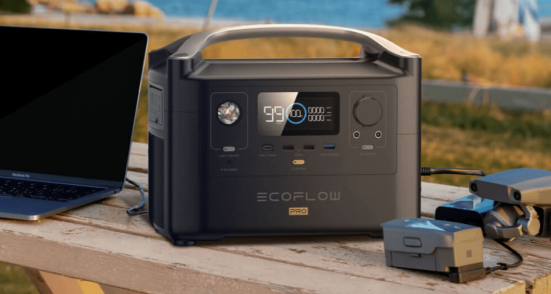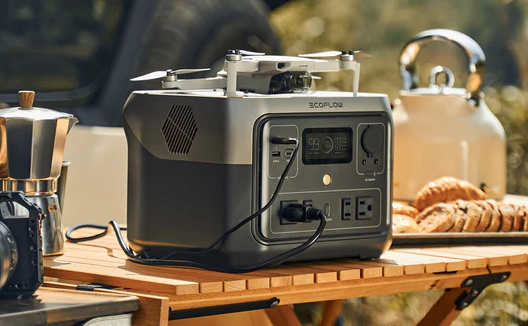Top 7 Ways to Use Portable Power at Home
- Run Your Kitchen Appliances Without a Wall Outlet
- Keep Baby Rooms Safe and Comfortable During Outages
- Power Your Home Gym Without Overloading Circuits
- Use Tools and Lights in Any Garage or Shed
- Host Outdoor Movie Nights and Gaming Parties Anywhere
- Light Up and Automate Your Balcony or Backyard
- Power an Entire Setup with One Portable Power Station
- Portable Power Is Quietly Changing How People Live
- FAQs About Using Portable Power at Home
You’re slicing vegetables when the power flickers. A second later, everything stops—lights, fridge, stove, even your kid’s sound machine. You sigh and reach for candles. But your neighbor? They press a button on their portable power station, and life goes on like nothing happened.
Portable power has quietly become a new part of home life. Not just for blackouts. Not just for camping. People now use it in smart, surprising ways—across the kitchen, nursery, backyard, and more.
Let’s explore how families are getting creative with portable energy at home.
Run Your Kitchen Appliances Without a Wall Outlet
Most people think portable power is only for charging phones or flashlights. But the truth is, it can support serious appliances.
During home remodeling, outages, or just daily life, families now plug in:
- Refrigerators (80–120W): A 3,600Wh portable station can keep it running for 24+ hours.
- Microwaves (1,000–1,500W): Heat lunch in under 3 minutes with no wall power.
- Coffee machines, blenders, and slow cookers: All easy loads.
- Box fans or ceiling fans: Under 100W, perfect for hot nights without AC.
Some people even set up “floating kitchens” in yards or balconies. With portable power, the air fryer doesn’t need to live on the crowded counter anymore.
And during outages? Food doesn’t spoil, morning coffee isn’t skipped, and routine stays intact.
Keep Baby Rooms Safe and Comfortable During Outages
Tara lives in a small apartment in St. Louis. Her daughter sleeps with a humidifier and a white noise machine. One night, a thunderstorm took out the grid for 6 hours. Tara’s portable station kept both machines running—and even powered a small space heater.
She didn’t need to move the crib. She didn’t need to worry.
Parents are now keeping backup power in nurseries and kids’ rooms. Quiet, clean, and safe, it supports:
- Nightlights
- Bottle warmers
- Sound machines
- Fans or space heaters
Many choose portable batteries over gas generators. Why? No noise, no fumes, and it can run indoors without worry. A 600W load can easily be covered for several hours by a mid-size unit, long enough to get through the night.


Power Your Home Gym Without Overloading Circuits
Building a home gym sounds easy—until you try to power it. Treadmills and bikes often overload outlets. Extension cords are messy and risky.
That’s why more people are using portable power stations in their gyms.
Let’s break down what they power:
| Equipment | Typical Load | Use Time with 3600Wh |
| Treadmill | 800–1,500W | 2–3 hours |
| Rowing Machine | 250–400W | 6+ hours |
| Adjustable Dumbbells | 30–60W | Weeks of use |
| Floor Fans | 70–100W | 30–40 hours |
No wiring upgrades. No electrician visits. Just set up the unit in your basement or garage and power your workouts on demand.
And since some people train late at night, quiet operation is a huge bonus.
Use Tools and Lights in Any Garage or Shed
Not every garage or shed has a good power source. Extension cords only go so far—and usually get tangled.
That’s where portable power unlocks freedom.
Take Greg to Oregon. He’s building a workbench for his son. Out in the backyard, under a pop-up tent, he plugs in:
- A belt sander (450W)
- A circular saw (1,200W)
- Two LED work lights
He runs his tools for nearly 3 hours, without touching a wall outlet. No gas fumes, no noise, just clean, steady power.
People also charge their drill batteries, run shop vacuums, or heat a small workspace—all off a single portable power source.
It makes DIY projects smoother and safer.
Host Outdoor Movie Nights and Gaming Parties Anywhere
It starts with a projector on the patio. Add a Bluetooth speaker, a few string lights, and a blanket fort—and you’ve got a backyard movie night.
Portable power keeps it all running, even where outlets don’t exist.
Common setups include:
- Projector (100–250W)
- Soundbar or portable speaker (30–80W)
- Streaming stick (10–15W)
- LED strips (5–25W)
Kids build gaming dens in spare rooms. Teens host retro movie nights in garages. Parents turn the attic into a music lounge. You just roll in a battery, press the power button, and enjoy.
No cords. No wiring. No interruptions.
Light Up and Automate Your Balcony or Backyard
Apartments often limit what you can plug in outdoors. But people are finding ways around that, with portable energy.
A few examples:
- Fairy lights for dinners on the balcony
- Mini aquariums with oxygen pumps
- Heated pet pads for rabbits or small dogs
- Water features like small fountains or bubbling pots
- UV grow lights for balcony herb gardens
These loads are small—often under 100W total—but run for hours. A 3,600Wh battery can support them for multiple evenings.
The real advantage? No need to mess with extension cords or outdoor-rated wiring. The setup is clean, flexible, and fully mobile.
Power an Entire Setup with One Portable Power Station
If you’ve read this far, you’re probably thinking: “Can one battery really do all that?”
Yes—but not just any battery.
TheEcoFlow DELTA Pro is designed for real household needs, which is a great portable power station.
Here’s what makes it different:
3,600Wh capacity: Powers a fridge for over a day, a treadmill for hours, or dozens of small devices
3,600W output (4,500W surge): Handles ovens, saws, dryers, or even AC units
Expandable to 25kWh: Add smart batteries or solar panels
Multiple input options: Wall outlet, solar, EV charger, or generator
Home integration: Connects to your main panel with Smart Home Panel
App control: Schedule charging, check usage, and monitor power anytime
It’s quiet. Safe indoors. Fast to recharge. And it gives you complete control—whether you’re cooking, working, or just relaxing.
For households that want reliable portable power with serious strength, the DELTA Pro is built for the job.
Portable Power Is Quietly Changing How People Live
Most people still picture portable power as a box for camping or emergencies. But for many, it has become a daily tool, powering routines, hobbies, safety, and comfort in ways they didn’t expect.
It gives parents peace of mind, builders more freedom, and families more fun. No cords. No fuel. Just power—where and when you want it.
So next time you trip over a full outlet strip or wait out a blackout with candles, ask yourself:
What could portable power change in your home?


FAQs About Using Portable Power at Home
Q1. Can portable power stations stay plugged in all the time?
Yes, most good portable power stations can be left plugged in without harm to the battery. Keeping it connected to wall power enables it to act like an uninterruptible power supply (UPS), i.e., it immediately takes over when the main power goes out. This is especially useful for protecting sensitive gear like computers or advanced security systems. Not all models can safely charge continuously while in use, so always check the manufacturer's guidelines. If you use it this way, it's a good idea to set up monthly deep discharge cycles to keep the battery healthy.
Q2. Is it safe to utilize portable power indoors for a longer period?
Portable power stations are safe to use indoors, especially those that use lithium iron phosphate (LiFePO₄)batteries. They are fume-free, quiet, and have inherent protection from overcharging, heat, and short circuits. However, it is still recommended to place the unit in a well-ventilated area and not block the cooling vents. Models with app monitoring allow you to view battery temperature and usage immediately, providing additional safety. As with any electric device, avoid its use in proximity to water or in small, poorly ventilated areas.
Q3. What should I consider before powering a desktop PC or server with portable power?
To safely run a desktop PC, NAS, or small home server, you need to check the overall wattage needed and make sure your portable power station has pure sine wave AC output. This current is the same as normal wall power and prevents damage to sensitive electronics. You should also make sure the battery will last to meet runtime needs, especially if you'll be using it during a power outage. Others also use portable stations with small DC UPS units so that any possible lag in switching is prevented. Using applications to monitor can also make the system shut down properly when the power is low.
Q4. How long does a portable power station last before needing replacement?
It is very much determined by the battery type and usage pattern. For example, devices with LiFePO₄ batteries can last up to 6,500+ cycles to 50% capacity—that's over 10 years of continuous home use. Cheaper models that use NMC batteries can deteriorate at a higher pace, especially under heavy use. To maximize lifespan, avoid leaving the unit with a fully drained or fully charged battery for a long time. Most advanced models today come equipped with battery management systems (BMS) and companion apps that will inform you when the battery requires attention or recalibration.
Q5. What appliances should not be used with a portable power station at home?
Most household appliances can be used safely, with the exception of some appliances that are not well-suited for use with portable stations. For example, resistive loads like high-wattage electric stoves, big dryers, or room air conditioners can overload the continuous output rating, even with premium batteries. Also, inductive loads like older refrigerators or power pumps with high power demand during start-up can activate protection circuits unless the unit is surge-rated. It's also not wise to plug in home-made DIY devices or ungrounded equipment, as they can be shock or fire hazards. Always calculate your wattage needs before plugging in unfamiliar devices.